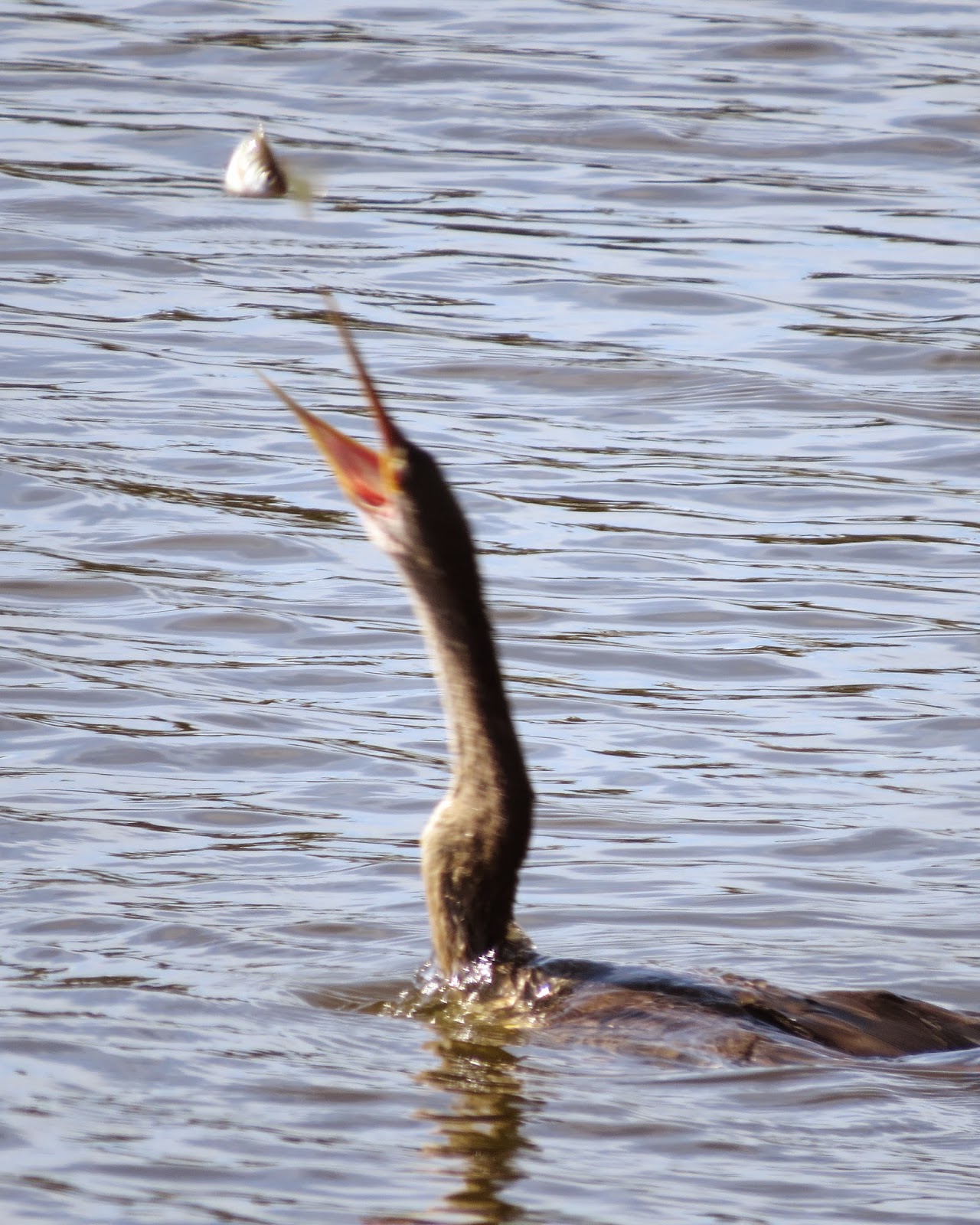Now for the interesting stuff. Anhingas' feathers become saturated faster than other waterbirds. This is what enables them to swim the way they do, with their body under water and head/neck above. Anhingas can submerge without diving by regulating their buoyancy. While swimming under water, they only use their feet and not their wings to propel through the water. A special adaptation in its neck allows it to retract it into an S-shape and then thrust it forward like a spear. Anhingas may spread their wings underwater to lure fish into the shade they create, known as "canopy feeding". After spearing prey, an Anhinga surfaces, tosses its prey into the air and then catches it head-first for ease in swallowing. The inside of their bill is lined with barbs pointing inward, which helps them hold onto a slippery fish.
I assumed that the Anhinga didn't have oil in its feathers and that was why it had to air dry them after swimming. That is not the case. The Anhinga's feathers have tiny spaces in them where the water can collect. As a result, they lose buoyancy and are able to swim under water. Anhingas have no insulating feathers next to their body, so part of their reason for spreading their wings in the sun is to dry, but they are also there to warm up.
Males are black with silver wing feathers and females have a buff colored neck and head.
I was able to photograph some of their behaviors, although not all of the photos are crisp. Still, I am glad for the chance to have seen it. I knew nothing about this bird, so it was all surprising to witness. Fun!
Speared
Speared
Note prey head is away from Anhinga
Now it tosses it and turns it around in one motion!





















No comments:
Post a Comment